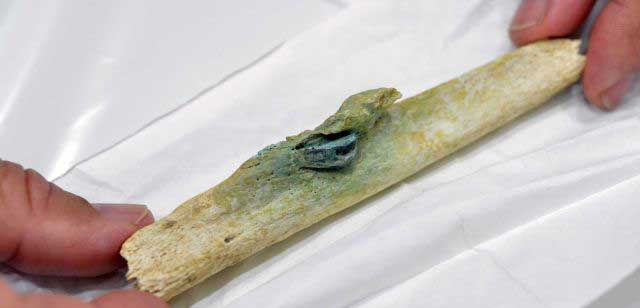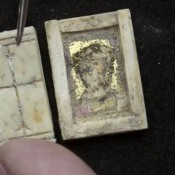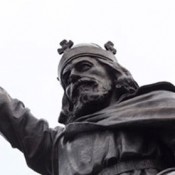Long Island doctors x-rayed the remains of a Greek warrior from 4th century BC, in an attempt to learn more about how he survived a debilitating war wound. Experts estimate the warrior was wounded in the time of Philip the Second, father of Alexander the Great.
It took less than 10 seconds to reveal the truth about the wounded warrior and confirm an Adelphi University archaeologist hypothesis about the veteran and how he survived a devastating injury that plagued him until his death.
Anagnostis Agelarakis, a professor and chair of Anthropology at Adelphi University, said the remains of the warrior were discovered during excavations conducted by the Greek Archaeological Service, in the mid 1980s. Agelarakis brought the remains (parts of the man’s skull and fragments of his left ulna, a major bone in the forearm, which are on loan from the Greek Archaeological Service, to North Shore Long Island Jewish (LIJ) Medical Center in New Hyde Park.
According to radiologist from North Shore-LIJ Dr. Helise Coopersmith, Greek field surgeons could not remove the bronze arrowhead from the warrior’s left ulna, because it would have caused more damage deep to the surface of the wound. The warrior lived with the embedded arrowhead until the age of 58 to 62 years. He lived with constant pain, akin to very severe carpal tunnel syndrome, as well as post-traumatic syndrome effects. Researchers believe that the warrior survived the injury with the care he was given and by keeping the wound clean.
Argie Agelarakis, Professor Agelarakis wife and an Adelphi faculty member, joined with second-year Adelphi student Kimberly Lombardi to create a facial reconstruction of the ancient warrior.
The remains will be returned to the Archaeology Museum of Kavala in Greece. Professor Agelarakis plans to later publish his findings.




